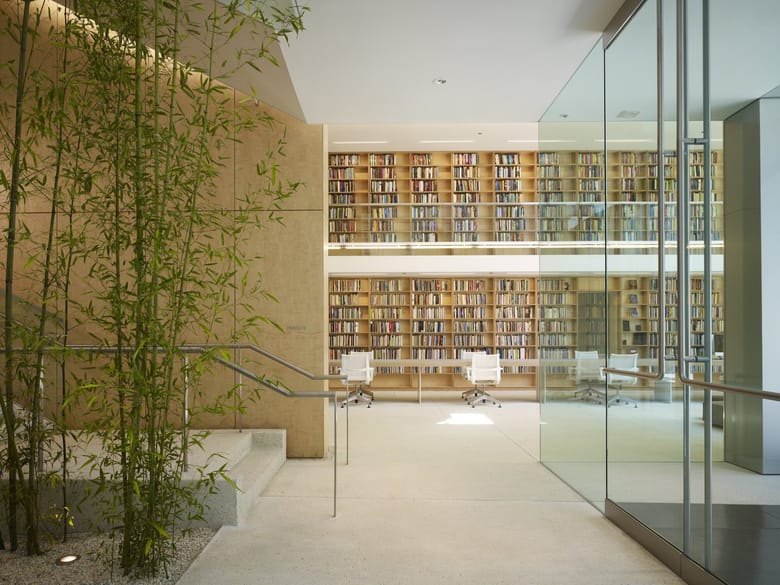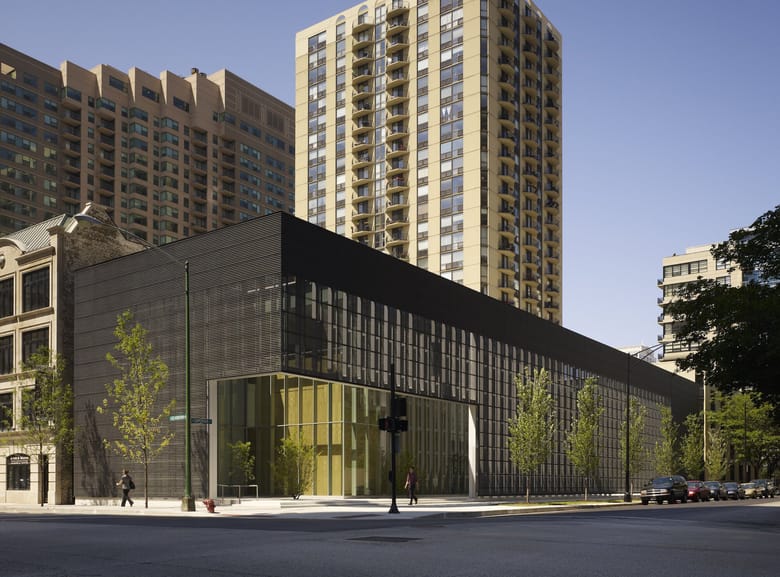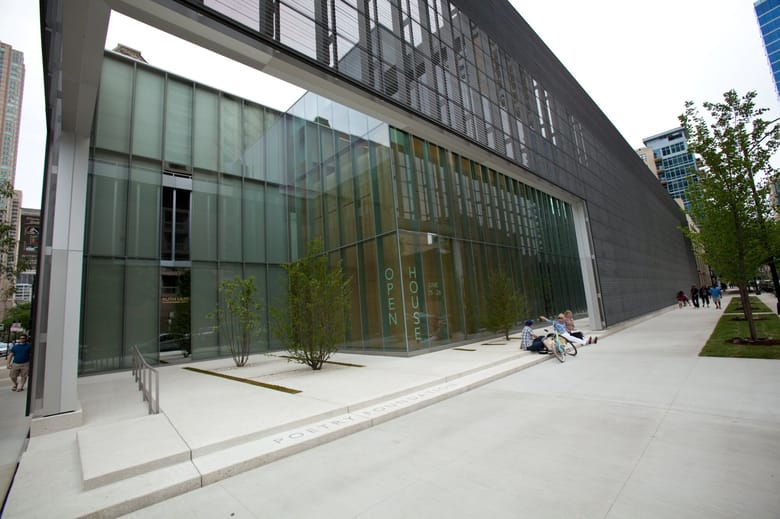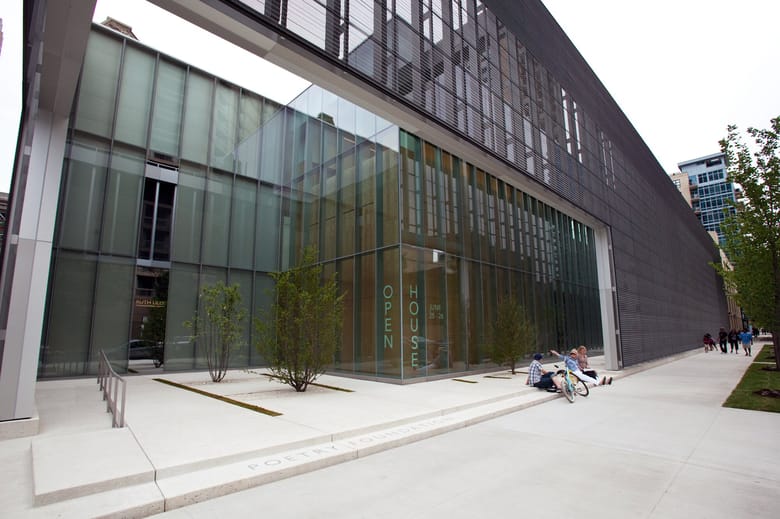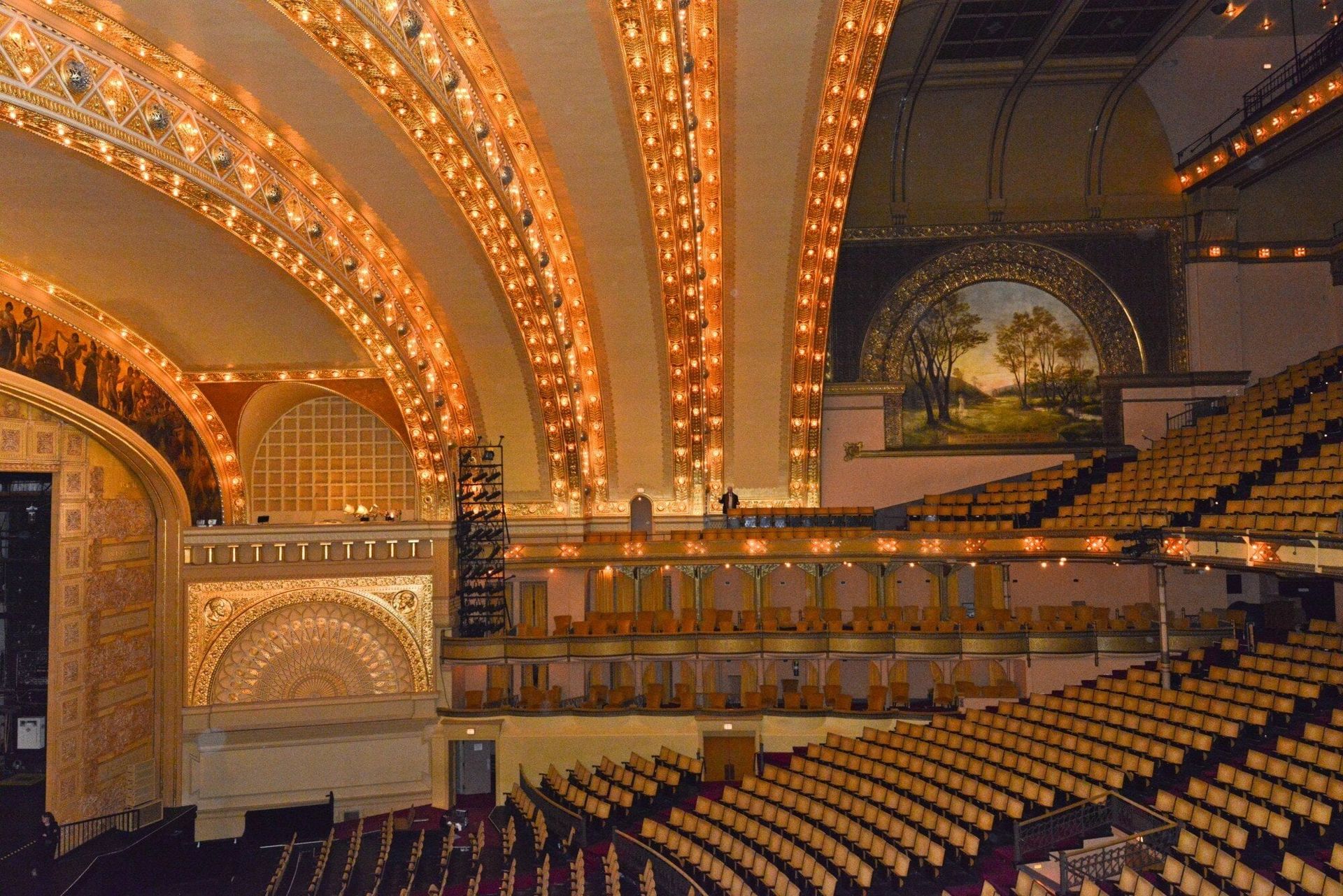At this corner, an unassuming, modernist-inspired building houses a public garden, a 30,000-volume library, an exhibition gallery and the Poetry Foundation’s programming offices.
Established in 2003, the Poetry Foundation works to raise poetry to a more visible and influential position in American culture. Its flagship initiative, Poetry magazine, is the oldest monthly publication devoted to verse in the English-speaking world. Founded in Chicago by Harriet Monroe in 1912, Poetry aims to print the best poems written today, in whatever style, genre or approach. The magazine is noted for publishing—and in some cases discovering—major poets including T.S. Eliot, Ezra Pound, Robert Frost, Langston Hughes, Marianne Moore, Gwendolyn Brooks, John Ashbery and many others.
FROM RAGS TO RICHES
Poetry was published on a shoestring budget for most of its history. But in 2001, the magazine received an astounding $200-million pledge from Ruth Lilly, heiress to the Eli Lilly pharmaceutical fortune. Soon after, the Poetry Foundation was formed and the decision was made to build a permanent home for Poetry, which had long housed its collection in the basement of Chicago’s Newberry Library.
The lead architect of the building, John Ronan, who is also a professor of architecture at Illinois Institute of Technology, was only 44 years old when the Poetry Foundation awarded him the commission. Ronan beat out prominent competitors including Rafael Viñoly and Tod Williams Billie Tsien Architects. Ronan's designs, including this one, typically have complex interlocking forms creating layered solids and voids. It is architecture that unfolds as you walk through it.
A BUILDING AND A GARDEN
The Poetry Foundation is a low building—inspired by modernist forms and design principles—and sits on an L-shaped plot. It has subtle layers, including a perforated, oxidized zinc screen leading to a garden that is treated as a room and serves as the entry to the building. The architects describe it as "a building in dialogue with a garden created through erosion of an implied volume as described by the L-shaped property boundary." The building’s physical presence reflects the foundation’s mission—to make poetry visible and accessible—with a central urban site and a transparent building design.
Did you know?
Donor Ruth Lilly wrote poetry herself. Years before announcing her gift, she had submitted several poems to Poetry, all of which were rejected with thoughtful handwritten notes from the editor, who found them to be good, but not quite up to the standards of the magazine. Ruth Lilly grew fond of the magazine and thus decided to make her enormous gift.
Did you know?
The design team for the Poetry Foundation spent months developing the sandblasted concrete for the ground-level floors that extend out into the garden. The concrete incorporates white silica, cement and specks of slag, giving it a warm and complex appearance.
Did you know?
The design team for the Poetry Foundation employed a host of acoustic strategies, such as varied surface materials in the performance space, so poets could read without amplification.
